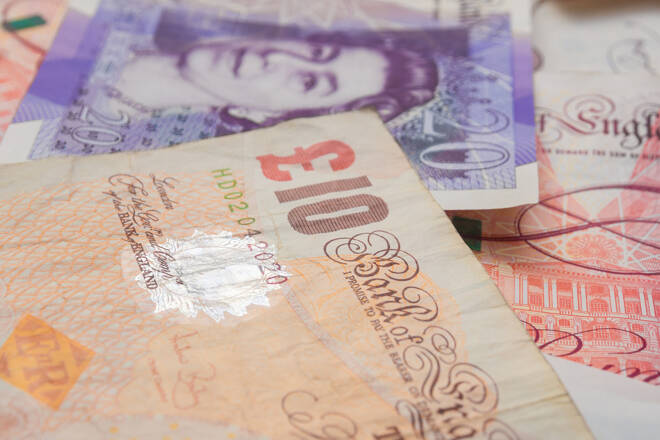Advertisement
Advertisement
GBP/USD Faces the Risk of a Return to Sub-$1.11 as Indicators Flash Red
By:
The GBP/USD hits reverse this morning with UK retail sales figures for September painting a grim picture of the UK economy as cost pressures build.
It was a busy start to the day for the GBP/USD. From the economic calendar, UK retail sales figures for September drew plenty of interest. In September, retail sales tumbled by 1.4%, with core retail sales down 1.5%. Economists forecast retail and core retail sales to fall by 0.5% and 0.3%, respectively.
According to ONS,
- In the three months to September 2022, retail sales fell by 2.0% compared with the previous three months.
- Food store sales slid by 1.8%, leaving sales 3.2% below pre-COVID levels in Feb-2020.
- Non-store retailing (mostly online retailers) sales fell by 3.0%, while 18.0% higher than pre-COVID levels.
- Automotive fuel sales fell by 1.3% and were 10.2% below their Feb-2020 levels.
The latest figures reflected the impact of inflation on consumption, pointing to further economic weakness. Notably, the latest figures will give the Bank of England food for thought ahead of the November policy decision.
While the numbers weighed on the Pound, UK politics will continue to take center stage. With the Tories in a race to elect a new Party leader, the next area of interest will be a Labour Party push for a general election. The polls have the Labour Party out in front by a considerable margin, suggesting a landslide victory should Britain return to the polls.
Notably, the latest Tory Party debacle makes things more difficult for the Bank of England. A general election and a possible Labor Party victory would bring further policy uncertainty for the Bank to tackle alongside inflation.
However, while Monetary Policy Committee member speeches remain an area of market interest, there are no members delivering speeches today. A quiet BoE calendar will leave the markets to monitor chatter with the media.
GBP/USD Price Action
At the time of writing, the Pound was down 0.49% to $1.11769. A choppy morning saw the GBP/USD rise to an early high of $1.12374 before falling to a low of $1.11745.
Technical Indicators
The Pound needs to move through the $1.1246 pivot to target the First Major Resistance Level (R1) at $1.1322 and the Thursday high of $1.13365. However, following the Truss resignation and today’s stats, the Pound would need a marked shift in risk sentiment to support a breakout.
In the case of another extended rally, the GBP/USD would likely test the Second Major Resistance Level (R2) at $1.1412 and resistance at $1.1450. The Third Major Resistance Level (R3) sits at $1.1577.
Failure to move through the pivot would leave the First Major Support Level (S1) at $1.1156 in play. However, barring another extended sell-off, the Pound would likely avoid sub-$1.1050. The Second Major Support Level (S2) at $1.1081 should limit the downside.
The Third Major Support Level (S3) sits at $1.0916.
Looking at the EMAs and the 4-hourly chart, the EMAs send a bearish signal. The GBP/USD sits below the 100-day EMA, currently at $1.12177.
The 50-day EMA closed in on the 100-day EMA, with the 100-day EMA easing back from the 200-day EMA, delivering bearish signals.
A GBP/USD move through the 100-day EMA and the 50-day EMA ($1.12242) would support a run at the 200-day EMA ($1.13067) and R1 ($1.1322). However, failure to move through the 100-day EMA would leave S1 ($1.1156) and sub-$1.11 in play.
The US Session
It is a quiet day ahead on the US economic calendar, with no economic indicators for the markets to consider. The lack of stats will leave the dollar in the hands of FOMC member chatter and market risk sentiment.
FOMC member Williams will speak later today. With the markets resigned to a 75-basis point rate hike in November, the focus remains on the December move. According to the FedWatch Tool, the probability of a 75-basis point December hike sits at 76.2%, up from 69.8% one week ago.
About the Author
Bob Masonauthor
With over 28 years of experience in the financial industry, Bob has worked with various global rating agencies and multinational banks. Currently he is covering currencies, commodities, alternative asset classes and global equities, focusing mostly on European and Asian markets.
Latest news and analysis
Advertisement
